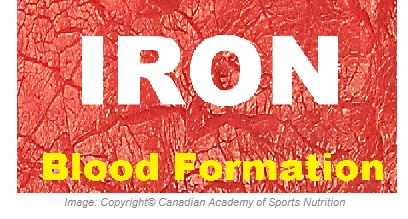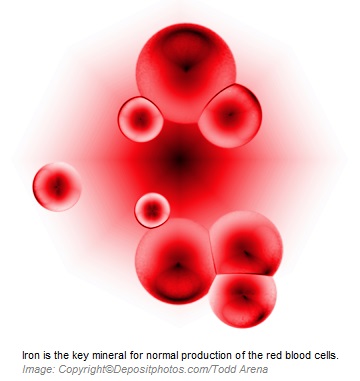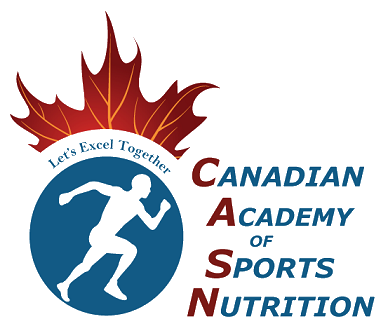Iron is an essential mineral and critical element in the function of all cells. It is  best known for its role in blood formation. The major role of iron is to carry oxygen. It is a component of hemoglobin (oxygen – carrying protein in the blood), myoglobin (oxygen – carrying protein in the muscles), and many enzymes such as cytochrome system in mitochondria and catalase (the first line of defence of the body against damages caused by free radicals).
best known for its role in blood formation. The major role of iron is to carry oxygen. It is a component of hemoglobin (oxygen – carrying protein in the blood), myoglobin (oxygen – carrying protein in the muscles), and many enzymes such as cytochrome system in mitochondria and catalase (the first line of defence of the body against damages caused by free radicals).
Insufficient intake of iron causes anemia (see “Anemia” under the section of “Medicinal Nutrition”).
Absorption of Iron:
Iron is absorbed from the upper part of the small intestine into the blood. It is a slow process and may take up to 4 hours. An average and well-nourished person has about 4 grams of iron in the body. Approximately 70% of iron is in hemoglobin, 10% in myoglobin, and 20% in enzymes and iron stores.
|
Distribution of Iron in the Body (mg): |
||
|
Average man (80 kg) |
Average woman (60 kg) |
|
|
Hemoglobin |
2500 |
1700 |
|
Myoglobin/Enzymes |
500 |
300 |
|
Transferrin iron |
3 |
3 |
|
Iron stores (liver, bone marrow, and spleen) |
600 – 1000 |
0 – 300 |
Iron absorption takes place mainly in the upper part of the small intestine and is influenced by few factors and physiologic states. Heme iron has better absorption rate than non – heme iron, 60% – 75% versus 5% – 7%. To maintain a normal hemostasis, the amounts of daily dietary absorption of iron in men and women are 1 mg and 1.4 mg, respectively.
|
The Rate of Iron Absorption in Certain Foods: |
|
|
Iron in vegetables (non-heme) |
5% |
|
Egg iron |
12% |
|
Liver iron |
50% |
|
Heme iron |
60% – 75% |
The factors that increase iron absorption are:
- Physiologic states such as pregnancy and breastfeeding.
- During infancy, childhood, and adolescence due to rapid growth.
- Iron deficiency anemia.
- Blood loss.
- Vitamin C.
- Vitamin A.
- Citrus fruits.
- Heme iron (in red meats).
- Proteins.
- Hydrochloric acid.
- Minerals, such as copper, manganese, and cobalt.
The factors that decrease iron absorption are:
- Calcium.
- Antacids.
- Hypochlorhydria (low stomach acidity).

- Soy protein.
- Oxalate.
- Phytates (in whole grains, soy protein, and walnuts).
- Fiber.
- Phosphates (in soft drinks).
- Polyphenols (in cocoa and coffee).
- Tannic acid (in back tea and coffee).
- Non – heme iron (from plants and vegetables).
- Zinc.
- Magnesium.
- IP-6 (inositol hexaphosphate).
- Vitamin E.
Food Sources of Iron:
There are two types of iron in foods: heme iron (animal sources) and non-heme iron (plant sources). Heme iron is found only in red meat, shellfish, fish and poultry. Non-heme iron is found mostly in fruits, vegetables, dried beans, nuts, grain products, milk and eggs.
Benefits of Iron:
The following conditions may benefit from iron:
- Iron deficiency anemia.
- Celiac disease.
- Dermatitis herpetiformis.
- Canker sore.
- Female infertility.
- As a support during pregnancy, breastfeeding, and postpartum.

- Alzheimer’s disease.
- Heavy menstruation.
- Anorexia nervosa.
- Vegetarians and vegans.
Dosage:
The RDAs for iron vary based on age groups and certain physiologic conditions (see the table below). However, the tolerable upper dietary intake of elemental iron for adults is 45 mg a day.
|
RDAs for Iron: |
|
|
Age group/Conditions |
RDA for Iron |
|
Men, 19 years and older |
8 mg |
|
Women, 19 – 50 years old |
18 mg |
|
Women, 51 years and older |
8 mg |
|
Women, 19 – 50 years, pregnant |
27 mg |
|
Women, 19 – 50 years, breastfeeding |
9 mg |
|
Vegetarians: – Adult men – Adult women, premenopausal – Adult women on birth control pills – Teenagers, girls – Girls on birth control pills |
14 mg 33 mg 11 mg 26 mg 12 mg |
Iron is usually added to many multivitamins – multiminerals. It is also available in multiple preparations. They include ferrous sulfate, extended release, ferrous fumarate, ferrous gluconate, ferrous succinate, ferrous lactate, chelated iron, and polysaccharide iron. Though they provide different amounts of elemental iron, they are generally all absorbed well.
The typical dosage of iron is up to 300 mg of elemental iron per day in divided doses. It should be taken on an empty stomach for better absorption. To enhance absorption, you may take iron with 250 – 500 mg of vitamin C.
|
The Amounts of Elemental Iron in Some Iron Products: |
||
|
Tablet (elemental iron in mg per tablet) |
Elixir (elemental iron in mg per one teaspoon) |
|
|
Ferrous Sulfate |
325 (65) 195 (39) |
300 (60) 90 (18) |
|
Extended Release |
525 (105) |
– |
|
Ferrous Fumarate |
325 (107) 195 (64) |
100 (33) |
|
Ferrous Gluconate |
325 (39) |
300 (35) |
|
Polysaccharide Iron |
150 (150) 50 (50) |
100 (100) |
Side Effects and Interactions:
Iron causes gastrointestinal disturbances such as nausea, vomiting, diarrhea, constipation, stomach upset, esophagitis (inflammation of the esophagus), and black tarry stools. Ferrous gluconate and ferrous fumarate cause fewer side effects than ferrous sulfate. Chelated iron is easily tolerated and has the least side effects, while ferrous sulfate produces more side effects.
Iron supplementation should be avoided in the following conditions:
- Thalassemia.
- Sickle cell anemia.
- Polycythemia.
- Hemochromatosis.
- Active rheumatoid arthritis.
- Porphyria.
- Hemosiderosis.
- Sideroblastic anemia.

